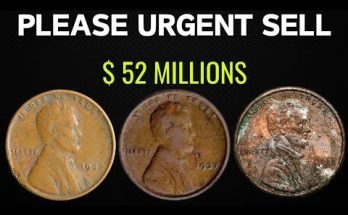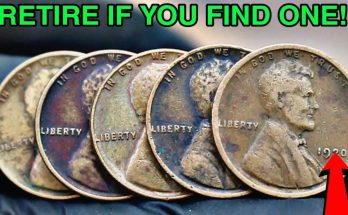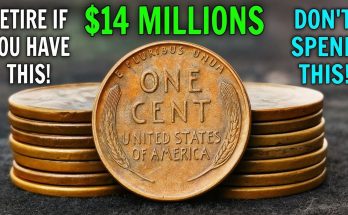She found a 1922 with no mint mark!!!
The photograph displays a close-up, macro shot of a 1922 Lincoln Wheat Cent, or “penny.” The coin is the central subject, resting on a textured, dark background, which appears to be a knitted or woven surface, providing a nice contrast to the coin’s smooth metallic surface. The image quality is high enough to show fine details, including the subtle wear on the coin and the texture of the metal.
The caption “She found a 1922 with no mint mark!!!” immediately highlights the most crucial and rare characteristic of this specific coin. The Lincoln cent was minted at the Denver, San Francisco, and Philadelphia mints. Usually, coins from Denver would have a “D” mint mark and those from San Francisco would have an “S” mint mark. Coins from the Philadelphia Mint, however, traditionally did not have a mint mark. The key feature of a 1922 Lincoln cent is that all of them were supposed to have been minted in Denver, and thus should bear a “D” mint mark.
The coin in the photograph, as confirmed by the caption and visible in the image, is a 1922 cent with no mint mark below the date. This makes it a highly sought-after and valuable error coin. The lack of a mint mark on a 1922 cent is a result of a famous minting error. The story, well-known in numismatic circles, is that the “D” mint mark on the Denver die became filled with grease or was polished away, leading to a number of coins being struck without it. This error is known as the “1922-D Plain” or “1922 No-D” cent. It is one of the most famous and valuable Lincoln cent varieties.
The coin’s condition, from what can be seen, appears to be in Good (G) to Very Good (VG) state. It is not in mint condition; it shows clear signs of circulation, including flattened details on Lincoln’s portrait and a worn surface. The coin’s color is a muted bronze-brown, indicating it has oxidized over its century of existence. The inscriptions “IN GOD WE TRUST” at the top and “LIBERTY” to the left of the portrait are visible but show signs of wear, particularly the lettering of “LIBERTY.” The date, “1922,” is clearly legible, and the space below it where the mint mark would be is notably blank.
Below the coin, a rectangular box with the words “A KEY DATE” is visible. This text box serves to emphasize the coin’s significance. A “key date” is a term used by coin collectors for a specific year, date, or mint mark combination of a coin series that is particularly rare and valuable. The 1922 No-D Lincoln cent is a prime example of a key date coin due to its famous minting error and scarcity compared to other Lincoln cents of the era. The finding of such a coin, especially in everyday circulation or an inherited collection, is a significant event for a collector, making the photograph an exciting showcase of a rare numismatic treasure.



